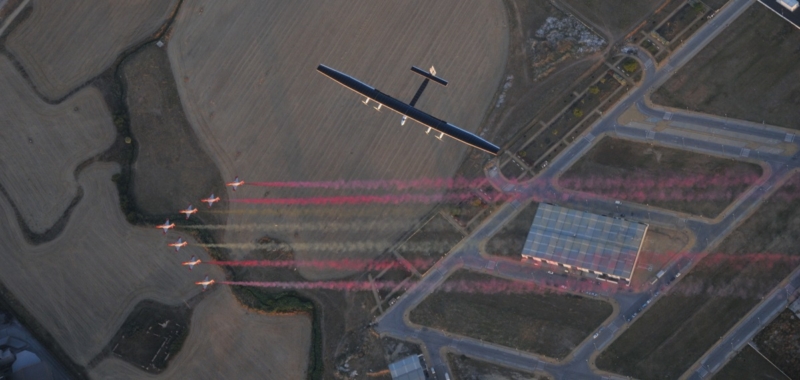Last week saw the first ever non-stop flight by a solar powered aircraft across the Atlantic.
It was an incredible achievement made as part of an attempt to fly around the world, a journey that started in Abu Dhabi in March and will see Solar Impulse II stopping at 12 locations as it aims to cover 22,000 miles over 25 flying days.
After many weeks of planning, Solar Impulse II departed New York last week on 20 June and landed in Spain in the early hours of Wednesday morning having flown non-stop to complete the penultimate leg of its challenge.
The aircraft itself is a spectacular feat of engineering. Powered by more than 17,000 solar cells, its wings are 236ft wide making them bigger than those on a Boeing 747, while its lightweight carbon fibre design means it weighs just 2.3 tonnes.
Another #selfie over the #Atlantic this time 😉 pic.twitter.com/3LSAYpTCwh
— SOLAR IMPULSE (@solarimpulse) June 28, 2016
A successful flight hinges on good energy management. During the day energy must be stored in batteries as electrical energy and altitude as potential energy, to allow for perpetual flight. In daylight hours, the aircraft slowly climbs to reach an altitude of between 18,000 and 28,000ft and at the end of the day it slowly descends to 5,000ft. It then remains in horizontal flight at 5,000ft until the slow climb commences again shortly after sunrise.
A range of possible destinations were planned for including; Paris, Le Bourget, Toulouse, Seville, Joao Paulo II and Rabat. Seville was eventually chosen as the best destination, primarily based upon prevailing weather conditions, but because of all these probabilities a number of air traffic control providers – including NATS with our responsibility for the North East Atlantic – were involved in the very detailed planning process.
Flying through oceanic airspace means there is no radar coverage, so Solar Impulse II provided Flight Plan updates with positions every three hours via email. It was agreed that when it is flying according to this plan, an update would be made every 12 hours to cover the next 24 hours and 8 positions. If the flight were to deviate from the plan significantly an immediate update for the next 24 hours would be forwarded to the relevant air traffic control provider.

An oceanic controller at Prestwick Centre
To ensure separation and safety from any commercial air traffic, complex airspace reservations also had to be established and closely managed to prevent other flights from entering specified areas at defined flight levels.
Despite all the planning activities, Solar Impulse II ended up flying south of Shanwick airspace, so didn’t come into direct contact with NATS. However the course of the flight could have changed at any stage due to a shift in the weather, so we maintained close communication with the flight team and the adjacent ATC agencies for New York, Gander and Santa Maria, just in case.
It was an honour to be involved in such a pioneering mission and we wish the team every success in planning the next stage that will see Solar Impulse complete its journey back to Abu Dhabi.
[Header image: Solar Impulse]
Comments
Please respect our commenting policy and guidelines when posting on this website.



